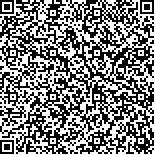| 引用本文: | 差崴·差庸,李慧,俞良登,任峰,坎万纳·提拉萨,维来通·提拉派特,提帕万·乌冬拉.离子束弹性背散射光谱分析经离子注入改性的玻璃填充红宝石[J].中国表面工程,2017,30(4):1~7 |
| CHAIWAI Chaiyon,LI Hui,YU Liang-deng,REN Feng,KAMWANNA Teerasak,VILAITHONG Thiraphat,TIPPAWAN Udomrat.Ion Beam Elastic Backscattering Spectrometric Analysis of Ion Implantation Modified Glass Filled Ruby[J].China Surface Engineering,2017,30(4):1~7 |
|
| |
|
|
| 本文已被:浏览 3367次 下载 2675次 |

码上扫一扫! |
|
|
| 离子束弹性背散射光谱分析经离子注入改性的玻璃填充红宝石 |
|
差崴·差庸1, 李慧2, 俞良登1,3, 任峰2, 坎万纳·提拉萨4, 维来通·提拉派特3, 提帕万·乌冬拉1
|
|
1.泰国清迈大学 理学院物理系 等离子体和粒子束物理研究实验室, 泰国 清迈 50200;2.武汉大学 物理技术学院, 武汉 430072;3.泰国高等教育委员会 物理中心, 泰国 曼谷 10400;4.泰国孔敬大学 理学院物理系, 泰国 孔敬 40002
|
|
| 摘要: |
| 宝石业是泰国的重要产业之一,但大多数宝石并不完美且带有缺陷,常采用玻璃填充的方法来处理。但该方法填充的宝石含有有毒重金属,因此急需开发新的宝石改性技术。离子束是近来发展起来的新技术,可以用来处理玻璃填充的宝石并可以去除其含有的有毒金属。文中采用泰国本地的玻璃填充红宝石样品先经80 kV加速的氮离子束注入至1017 ions/cm2剂量,然后分别在泰国清迈和中国武汉用2 MeV和1.7 MeV的质子束做弹性背散射光谱分析。研究了离子束处理前后,玻璃填充宝石的金属杂质、含量及其分布。两地的分析结果互相印证、共同揭示了宝石中主要的有毒金属是铅,铅的浓度经离子束处理后约为0.15%,比离子束处理前降低了20倍,且铅在宝石中的分布是均匀的。结果表明:离子束是一种有效的处理玻璃填充宝石的方法。 |
| 关键词: 离子束分析 弹性背散射 离子注入 红宝石 玻璃填充 铅 |
| DOI:10.11933/j.issn.1007-9289.20170221003 |
| 分类号:TG174.444 |
| 基金项目: |
|
| Ion Beam Elastic Backscattering Spectrometric Analysis of Ion Implantation Modified Glass Filled Ruby |
|
CHAIWAI Chaiyon1, LI Hui2, YU Liang-deng1,3, REN Feng2, KAMWANNA Teerasak4, VILAITHONG Thiraphat3, TIPPAWAN Udomrat1
|
|
1.Plasma and Beam Physics Research Facility, Department of Physics and Materials Science, Faculty of Science, Chiang Mai University, Chiang Mai 50200, Thailand;2.School of Physics and Technology, Wuhan University, Wuhan 430072;3.Thailand Center of Excellence in Physics, Commission on Higher Education, Bangkok 10400, Thailand;4.Department of Physics, Faculty of Science, Khon Kaen University, Khon Kaen 40002, Thailand
|
| Abstract: |
| Gemstone industry is one of the important Thailand local businesses. However, the majority of the stones are not perfect but with defects or flaws. Glass-filling treatment has been a traditional method to rescue the poor stones. Since the glass-filled stones may contain toxic heavy metals, development of new gemstone modification techniques is necessitated. Ion beams have been developed as a novel technique of modifying gemstones for gemological improvements and the technique is also being applied on the glass-filled gemstones to remove the toxic metals. Therefore, the glass-filled gemstones before and after ion beam modifications should be clarified for their metal impurity concentration and distribution. In this work, gemstone samples of local glass filled ruby were firstly by irradiated with 80 kV accelerated nitrogen ions to 1017 ions/cm2 and then analyzed using elastic backscattering spectrometry techniques with 2 MeV and 1.7 MeV proton beams in Chiang Mai (Thailand) and Wuhan (China), respectively. Both elemental concentration and distribution in the materials were analyzed before and after ion implantation. The results reveal that the dominating toxic heavy metal in the stone is confirmed to be lead. The atomic concentration of lead in the ion beam treated ruby is about 0.15% in a uniform distribution, decreased by near 20 times compared with that of the as-glass-filled stone, demonstrating the effectiveness of ion beam treatment of the glass filled gemstones. |
| Key words: ion beam analysis elastic backscattering spectrometry ion implantation ruby glass filled lead (Pb) |
|
|
|
|

